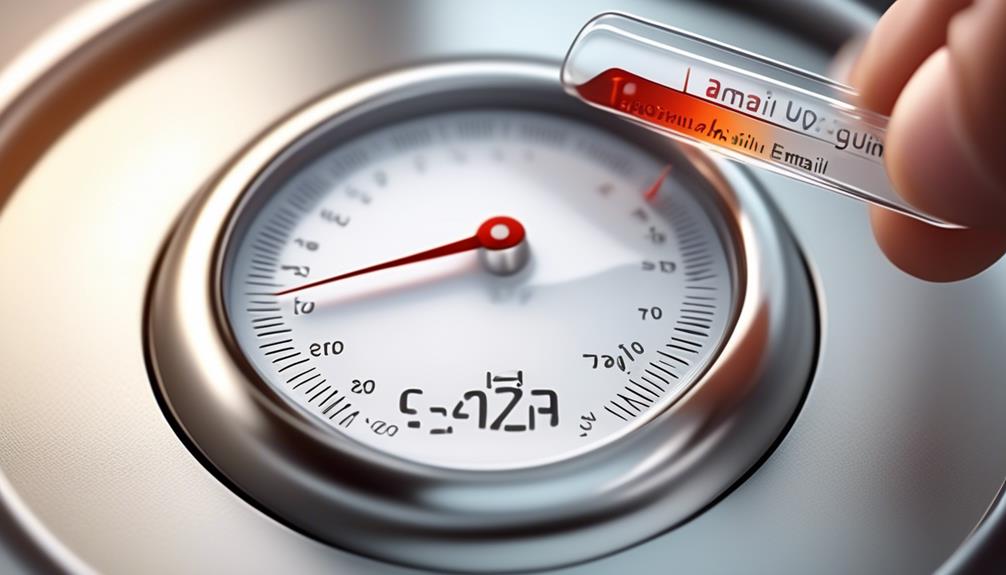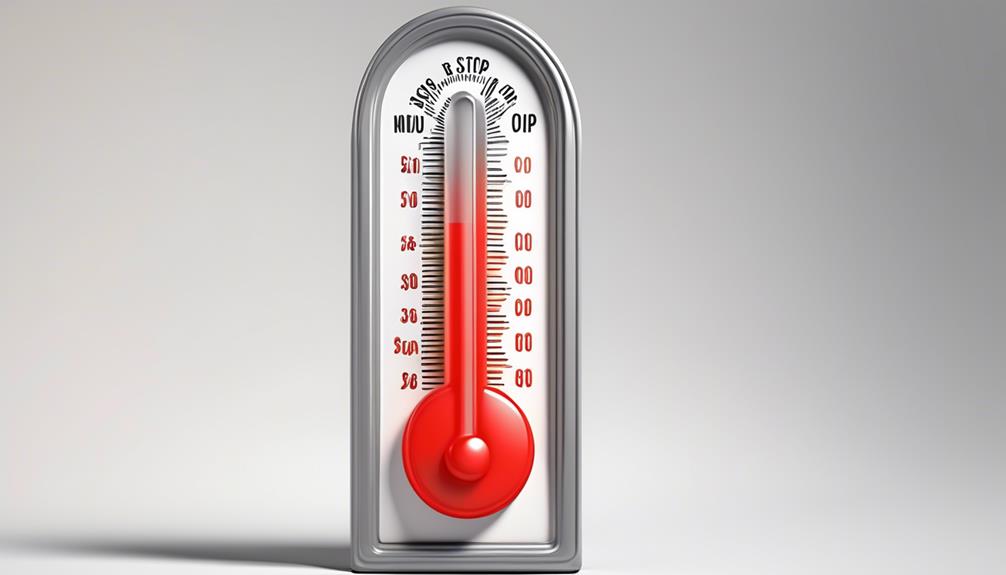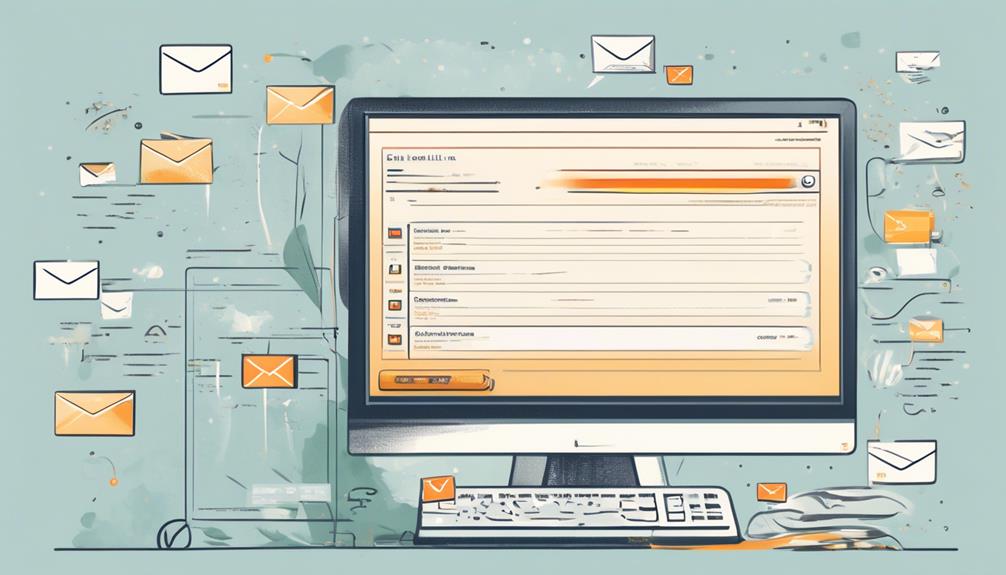Priming your email account before sending cold emails may be seen as time-consuming, but it is crucial for establishing trust and credibility with recipients and email service providers.
By gradually engaging with newsletters, strategically increasing email frequency, and utilizing automated tools to simulate human interaction, you set the stage for successful outreach campaigns.
But what are the specific steps and tools that can help in this process?
Join us as we explore:
- Manual warm-up strategies
- The effectiveness of automated tools
- Signs that indicate it's time to stop warming up
- Final tips for ensuring your cold emails hit the mark.
Key Takeaways
- Gradually increase email sending volume during warm-up phase
- Use automated tools or services for effective email warm-up
- Personalize cold emails to avoid sounding like a spammer
- Maintain engagement and adjust approach if warm-up efforts are ineffective.
Why Warm Up Your Email Account?
To enhance email deliverability and optimize outreach efforts, warming up your email account is crucial for establishing a strong sender reputation and unlocking its full potential. When you send cold emails from a new account, it's like starting off in a race without stretching – you risk being left behind.
By gradually increasing the number of emails you send, you warm up your account and signal to email providers that you're a legitimate sender. This warming process is essential because fresh accounts typically have smaller sending limits. Without a proper warm-up, your emails might end up in spam folders instead of inboxes during cold email outreach.
A well-warmed email account not only increases your email sending limit but also improves your chances of reaching your target audience effectively. Emails from a warmed-up account are more likely to have higher open rates and less likely to be flagged as spam.
Manual Warm-up Strategies

Embark on your email warming journey by initiating personal connections through sending a small number of emails manually each day to friends and business partners. This manual warm-up strategy helps in establishing genuine interactions, which can positively impact your email reputation and deliverability. It is crucial to focus on creating authentic content that resonates with recipients and avoids triggering spam filters. Additionally, maintaining a balanced sending volume and gradually increasing it over time can prevent your emails from being flagged as suspicious by your email service provider.
Let's delve deeper into some manual warm-up strategies:
| Manual Warm-up Strategies | Key Points |
|---|---|
| Start gradually | Send a small number of emails daily to contacts you know well. |
| Diversify your contacts | Include email addresses from different domains to build credibility. |
| Personalize your content | Write emails that sound human, avoiding spam-like language. |
| Engage in conversations | Respond to replies to simulate regular email activity. |
| Control sending volume | Increase the number of emails sent slowly to maintain a positive reputation. |
Automated Warm-up Tools
As we explore the realm of Automated Warm-up Tools, users can leverage advanced features to gradually enhance their email sending capabilities and mimic authentic user behavior. These tools play a crucial role in preparing and optimizing email accounts before diving into cold email campaigns. By utilizing Automated Warm-up Tools, the risk of sending cold emails that get blocked by spam filters is significantly reduced.
Maintaining a high sender reputation is essential, and these tools help achieve that goal effectively.
One key benefit of Automated Warm-up Tools is the ability to integrate seamlessly with various email service providers, making the warm-up process streamlined and efficient. With features like adjusting sending volume and receiving daily insights, users can ensure a successful warm-up phase.
Signs to Stop Warming Up

When it becomes evident that our warm-up efforts are yielding diminishing returns, it's crucial to recognize the signs signaling the appropriate moment to cease the warming up process. One clear indication is when your email account hits its maximum sending limit, indicating that it's time to transition from warming up to sending cold emails.
Additionally, if you observe a noticeable drop in engagement and response rates despite your warm-up activities, it may be time to reassess your strategy. Another red flag is when your emails consistently end up in spam folders or get flagged as spam, impacting the reputation of your domain and sender reputation.
If recipients start marking your emails as spam or unsubscribing from your list, it's essential to stop warming up and evaluate your approach. Receiving a high number of spam complaints or unsubscribe requests suggests that your warm-up efforts may not be effective.
Lastly, if you're experiencing low deliverability rates and your emails aren't reaching the intended recipients, it's crucial to consider halting the warm-up process to prevent further damage to your domain's reputation and bounce rate.
Final Tips for Successful Cold Emails
As we wrap up the warm-up phase and prepare to enhance our cold email strategy, here are essential tips for ensuring successful outreach campaigns.
- Gradually increase the number of emails you send during the warm-up phase to establish a good reputation.
- Use automated tools or services to manage the warm-up process and simulate real user behavior.
- Personalize your cold emails to make them stand out and avoid sounding like a spammer.
- Maintain engagement with your email account by replying to emails from other accounts and subscribing to newsletters.
Frequently Asked Questions
How Do You Warm up an Email for a Cold Email?
We warm up an email for cold outreach by gradually increasing the volume of emails sent, engaging with recipients, subscribing to newsletters, and confirming subscriptions.
Additionally, we utilize automation tools and optimize email content.
Monitoring metrics like open rates and response rates allows us to refine our approach effectively.
These strategies enhance deliverability and engagement, setting the foundation for successful cold email campaigns.
How Do I Warm up My Email Server?
We warm up our email server gradually by increasing sending volume, engaging with newsletters, and utilizing automated tools.
Personalizing emails and starting with trusted recipients helps establish credibility.
Replying to emails and simulating regular mailbox activity is crucial.
Analyzing A/B test results and making data-driven decisions optimizes our cold email strategy.
How Do You Add Warmth to an Email?
Adding warmth to an email involves personalization and avoiding generic templates. It's crucial to sound human and mention specific details about the recipient.
By limiting links and media files, you can prevent triggering spam filters. Choose a reputable email service provider for better deliverability.
Analyzing A/B test results helps optimize content for higher response rates.
How Do I Warm up My New Email Domain?
Warming up a new email domain is crucial for building trust with email service providers. We recommend starting slow, sending a small number of emails daily, and gradually increasing the volume.
Personalizing subject lines, avoiding spammy language, and engaging with recipients can also help.
Monitoring deliverability and open rates is key to gauging success.
Is Warming Up Your Email Account Necessary Before Sending Cold Emails?
Yes, it is essential to warm up your email account before sending out cold emails. Warming up your email ensures that your emails are not marked as spam and that they have a higher chance of reaching the recipient’s inbox. Warm up your email by gradually increasing the volume of emails sent.
Conclusion
In conclusion, warming up your email account is crucial for successful cold emailing. By following the steps outlined in this article, you can improve deliverability rates and build a strong reputation for your account.
But remember, are you willing to put in the time and effort to ensure your emails reach their intended recipients? It's worth it for the long-term success of your email marketing strategy.










